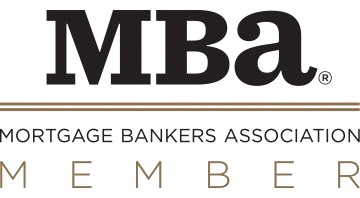Editorial Integrity
Moving to the US can feel overwhelming, filled with unknowns and uncertainties. HomeAbroad editorial team includes certified immigration experts/USCIS nerds who translate complex legalese into clear, actionable moving and visa guides. Rest assured, every article undergoes a reader-centric editorial process to ensure accuracy and reflect current regulations.
If you are moving to the USA (United States of America) from overseas and want a quick guide on how to get started, this article is just for you! This guide will help you find your way around in the new country, know what documents you need, and provide some tips on settling in.
You might be moving because of work or family reasons, or you’re an international student, or just because it’s time for a change. Whatever your reason, moving overseas can seem daunting, but it should go smoothly if you follow the simple steps outlined in this guide. We will discuss the various steps involved in moving to America, what you need to do before moving, and what to do once you get here in the USA!
Table of Contents
What are the benefits of moving to the USA?
The American Dream is alive and well, and it’s available for anyone who wants it. Moving to America offers many benefits, the most notable being that moving to America means moving towards a better opportunity in the largest economy in the world.
As of 2019, United States’ nominal GDP was $21.5 Trillion and is expected to go up to $25.3 Trillion in 2024, making it the largest economy in the world measured by nominal GDP.
The United States has a free market economy that allows for nimble business investment and foreign direct investment. The United States is the world’s greatest geopolitical power, and it can keep a big international debt as the world’s primary reserve currency producer (US Dollars). The US economy is at the forefront of technology in many industries and is home to some of the biggest companies in the world in terms of valuation.
All these factors really make the USA the Land of Opportunity!

The USA is also a wonderful country with lots of different landscapes from deserts to beaches. The USA has some fantastic cities that are always bustling, but you can also live in more suburban areas and find peace if that’s what you’re looking for. So you can pretty much find whatever you are looking for in terms of lifestyle and location.
The following are the most notable benefits of moving to America.
Top 6 Reasons to Move to America:
- More career opportunities for personal growth in the world’s largest economy
- Relatively lower costs of living and owning a home relative to other developed countries
- The best higher education system in the world
- One of the best medical facilities in the world, leading to higher life expectancy
- Diverse landscape, weather and natural beauty all around to fit everyone’s taste
- Improved quality of life with USA’s economic strength coupled with affordability
US Visa – Everything you need to know
US Visa is an immigration document that allows you to enter the USA. You can apply for a US visa through the nearest USA embassy or consulate in your country. The US Department of State generally issues a US visa. However, it has an expiration date on its face, which will be anywhere from 6 months to 10 years depending on what type of USA visa you are applying for: tourist, student, work, etc.
You may not need a visa if you are a citizen or national of a Visa Waiver Program (VWP) Designated Country and are traveling to the United States for tourism or business for stays of 90 days or less.
What are the different US Visa Categories?
The USA visa application process varies according to the type of USA visa being applied for.
Here are the main US Visa categories for traveling to the United States:
1. Tourism/Visit and Temporary Business (B1/B2 Visa)
In addition, the United States issues tourist and visitor visas to individuals who wish to come into the country temporarily for business (visa category B-1), leisure (B-2), or both (B-1/B-2).
Examples of temporary business include attending business meetings or conferences and negotiating contracts.
2. Study & Exchange (F, M, and J Visa)
The United States is one of the primary destinations for international students. To study in the United States, you must have a student visa. Whether you need an F or M visa depends on the type of school and program of study you wish to attend.

Exchange visitor (J) visas are nonimmigrant visas for individuals approved to participate in exchange visitor programs in the United States.
3. Employment (H, L, O, P, Q Visa)
Temporary work visas are for foreign nationals who wish to enter the United States to legally work for a specific length of time and do not qualify as permanent residents. Employment visas require the employer to submit a visa petition with United States Citizenship and Immigration Services (USCIS). An approved petition is required to apply for a work visa.
Here are the various categories of work visas in the US:
H visa: For professionals to work in a specialty occupation. Requires a higher education degree or its equivalent.
L Visa: For Intracompany Transferee to work for a current employer in a managerial or executive capacity or position requiring specialized knowledge in the US from their previous location overseas in an affiliate or subsidiary.
O Visa: For individuals with Extraordinary Ability or Achievement in the sciences, arts, education, business, athletics, motion picture, and television fields.
P visa: Artist, Entertainer, or Athlete visa
Q Visa: Participant in an International Cultural Exchange Program
What is U.S. Citizenship and Immigration Services (USCIS)?
USCIS oversees immigration to the United States and approves (or denies) immigrant and nonimmigrant visa petitions. You can check your US visa case status post your application process on the USCIS website.
4. Immigration Visa (Green Card)
If you are interested in immigrating to the United States permanently, you will need an immigrant visa or what’s commonly referred to as a Green Card. The USA offers many different immigration visas or green card options depending on your specific situation.
There are five main types of US immigrant visa or Green card categories:
- Family-Based Immigration – Green card for a certain family member(s) of U.S. citizens and lawful permanent residents (green card holders)
- Employment-Based immigration – Green card for permanent residency and employment of temporary foreign workers and immigrant investors
- Diversity Visa Lottery – The Diversity Visa Program (also commonly known as the green card lottery) annually makes a limited number of green cards available to individuals who fulfill certain eligibility requirements from nations with low immigration rates to the United States.
- Special Immigrant Visa – Provides a Green card to various special categories, including former US government employees and their family member(s) in overseas countries and asylum seekers.
- Adoption – An adoption green card issued for children from foreign countries who US citizens adopt.
After your immigration visa petition is approved, USCIS forwards it to National Visa Center (NVC) for immigrant visa pre-processing at the correct time. In addition, NVC will assist you in preparing your visa application for an interview for certain visa categories at US Embassies & Consulates.
5. Other Visa Categories
This includes all other visa categories such as transit visas, diplomat visas, etc.
US Visa Document Requirements
For most nonimmigrant visas, here are the required documents for applying for a US visa:
- Completed DS-160 form
- Valid Passport
- Receipt of payment of visa application fee ($160)
- One Photograph
- Social Media Details
- Other supporting documents such as Bank statements / Return Flight tickets / Employment letters etc. as applicable
How to get your US visa
Here is the step by step instructions to getting your US visa:
- Check to see whether you require a visa or can take advantage of Visa Waiver Program
- Select the type of US visa you will apply for based on your purpose of visit
- Fill out the DS-160 form for a nonimmigrant visa.
- Pay the application fee.
- Schedule your visa interview.
- Collect all your required supporting documents.
- Attend your visa interview.
- Wait until your visa is approved.
Moving to the USA Checklist: Top 11 Things to Do
Now that you have successfully gotten your US visa, it’s time to start planning for the big move and get you set up in your new home.
Here is the checklist of key things that you should do to plan your move, as well as keep in mind as soon as you arrive in the US:
1. Plan your move to America and understand your moving costs
Moving abroad can be a daunting task. But when done right, it can also be an exciting and fulfilling experience. Following are some of the key costs that you will have to keep in mind as you plan your move:
- Hire a professional moving company or shipping service if you need to move a lot of stuff from your home country to the US. Packing your belongings is the first step to moving. Consider selling or donating extra items you no longer need.
- Plan your travel well in advance to save on travel costs and maintain a list of important phone numbers and addresses.
- Make sure you have all the mandatory immigration documents, required vaccinations for the USA.
- Arrange your temporary accommodation for the first few weeks as you will need some time to find a place to rent or buy.
2. Apply for your Social Security Number (SSN)
Social Security is a federal program that provides social insurance for citizens of the United States. A US Social Security Number is a nine-digit number issued to identify and accurately record wages or self-employment earnings of US residents with a social security account. The Social Security Administration creates this account on behalf of the person when they accept work in the USA.
When moving to America, applying for a Social Security number as soon as you arrive is important because you will need it to get a job, collect Social Security benefits, and get other government services.
How can US non-citizens apply for SSN?
Only non-citizens authorized to work in the United States by the Department of Homeland Security (DHS) can get a Social Security number.
If you’re applying for an immigrant visa (green card) from your home country, you can apply for SSN along with your immigrant visa application and obtain your social security card before arriving in the US. Alternatively, you can visit a social security office in person.
Nonimmigrant visa holders can apply for SSN in two ways:
- You can apply for your SSN on the same USCIS application Form I-765 (Application for Employment Authorization) if you are lawfully present in the United States and intend to seek work authorization from the United States Citizenship and Immigration Services (USCIS).
- If you are currently in the US on a valid visa and your visa status allows you to work, you must go to a social security office in person to apply.
Required documents for US non-citizens to apply for SSN
First, the Social Security Administration will need your US immigration documents and valid foreign passport to validate your identity and work authorization in the US.
Following are acceptable documents:
• Form I-551 (Lawful Permanent Resident Card or Immigrant Visa)
• Visa stamp showing the class of admission that permits work in the US
• Form I-94 (Arrival/Departure Record) or
• Form I-766 (Employment Authorization Document/EAD).
3. Open a US Bank Account
Many US Newcomers are unaware that some US banks allow US non-citizens to open a US bank account without SSN or remotely before arriving in the US.
When you move to America, you’ll need to open an American bank account to pay your bills and receive your salary. In addition, you should open a checking account with a debit card so you may pay for things without having to carry cash all the time.
The American bank account opening process will be different based on the type of US residency status you have currently, i.e., if you are planning to open your checking account without SSN from your home country before arriving in the US or if you have already obtained an SSN and are presently residing in the US.
Please refer to this detailed guide on how foreign citizens can open US bank accounts without SSN or remotely before arriving in the US and the best ways for opening bank accounts for foreign nationals after arriving in the US.
4. Obtain Driver’s License in the US
If you’re thinking about moving to the USA, a driver’s license is a must, and you should apply for one as soon as possible after arriving in the US. Not only will you need a driver’s license to drive in America, but it also serves as a primary local ID in the US.
You can apply for driving licenses by visiting the Department of Motor Vehicles (DMV) office near where you live or work.
Typically, the following documents are required for an application for a driving license for non-citizens:
- Proof of Social Security Number depending on the state. Some states don’t require proof of SSN
- Passport or other documents that serve as valid proof of identity
- Proof of residence in the state, such as a utility bill or bank statements.
- Photograph – a new picture will be taken at the DMV for your driver’s license.
Find out what kind of driver’s licenses are available in your state, and make sure to apply for the one that will best suit your needs, such as standard licenses and IDs, Real IDs, and Enhanced licenses and IDs.
5. Understand the American Healthcare System
Unlike many other developed countries where universal healthcare provides a basic level of coverage to all citizens, the US has a mixture of private medical insurance and two government-run programs known as Medicare and Medicaid.
Healthcare in the USA is expensive. Americans pay for their medical care either directly or indirectly through their health insurance in most cases. Therefore, ensure that you have a good medical coverage plan upon arriving in the US.
Here are the broadly three types of medical insurance coverage available in the US:
Private Health Insurance
Private health insurance is typically given through your employer or school, although you must purchase it individually if necessary. Your employer can either pay fully for your health insurance or ask you to cover a part of the premium.
Medicaid
Medicaid is a health insurance program used by low-income people, including families with children and pregnant women. It features a joint effort funded by taxes from the federal government and individual states.
Medicare
The Medicare program, administered by the United States government, is a tax-assisted health insurance plan and is available to older Americans over 65 years old.
Healthcare in the USA is expensive. Therefore, it is good to have one. If you have a job in the United States, your employer may provide health insurance benefits. To see if you are covered, speak with your employer to determine what options they offer and how much of that cost they cover. In addition to their contribution, they may ask for other contributions from you as well – so make sure you review all costs carefully.
Following is a glossary of keywords associated with American health care:
- Premium: The monthly cost of your plan.
- Deductible: The amount you pay out of pocket before your insurance benefits begin.
- Co-Insurance: The percentage of expenses you’ll still have to pay after your insurance policy takes effect.
- Co-pay: What you pay the doctor at every visit.
Important: Make sure you register with a Primary Care Physician (PCP) soon after arriving in the US. Your PCP will be your primary point of contact for regular medical needs, and they can refer you for any procedures or tests that need to be done.
6. Build US credit history
Many new immigrants and international students struggle to begin their new life in the United States with their credit score or credit history from their native country suddenly missing from the land of opportunity, America, which they now proudly call home. The US credit score determines your creditworthiness in the US and will be an important aspect of your financial life in the US.
Hence, it’s important to build and maintain your credit history in the US. Ideally, it would help if you started working on your credit as soon as you arrive in the US. The best and simplest way to build credit history in the US is to get started with a US credit card.
Refer to our detailed guide on How to Build Credit and get US Credit Card for New Immigrants & International Students.
7. Housing: Buying a House and Obtaining a Mortgage as a New Immigrant in the USA
Whether you’re coming to the US on a temporary visa for work or study or coming on an immigrant visa (green card), owning a house will be a dream come true. It’s always more cost-effective to own a home than to rent in the long run. You may use your monthly housing rental payments towards accumulating equity in a property that is increasing in value. Purchasing a home has additional benefits from an investment standpoint. It helps to accumulate wealth over time.
Contrary to what you might think, you do not have to wait two years or more to build a good US credit score before being eligible for home financing in the United States. In addition, some US lenders offer foreign national mortgages to US newcomers and Non-residents with no US credit history at competitive rates. This makes it possible and affordable for you to start researching your options to buy a house in the USA even before arriving.
Consult our comprehensive guide on how to get a mortgage as a new immigrant with no credit history in the United States.
Buying a house in the US as a foreign national can be quite intimidating, especially if you are not aware of how the US real estate process works. If you’re considering buying a property in the United States as a US newcomer or as a non-resident foreign investor, this step-by-step guide will tell you everything you need to know about how to buy real estate in the United States from start to finish.
When you are ready to buy a house in the US either shortly after arriving (with the availability of home financing for newcomers) or after settling in the US; you should ideally work with a real estate agent who has expertise in working with foreign national clients, such as a real estate agent with CIPS designation.
A CIPS (Certified International Property Specialist) real estate agent has undergone specialized training to handle real estate transactions smoothly for foreign-born individuals residing in the US.

Find the best real estate agent with international expertise
Connect with a HomeAbroad real estate agent in your area.
8. Understand your employee benefits in the US
USA’s employment benefits are among the best in the world, and it’s important to understand and take advantage of all the USA employment and employee benefits available to you as you move to America as a newcomer on a green card or temporary visas with a work permit.
Here are the most notable employment benefits in the US:
- Health Insurance: Most employers in the US contribute towards an employee’s healthcare coverage. Employees usually pay a percentage of the total premium, but unlike most countries where you are required to contribute 100% towards health insurance premiums, USA employees typically have their share paid for by employers.
- Paid Time Off (PTO): USA companies offer between 15-30 days off on average each year in addition to USA public holidays. USA PTO typically includes vacation days, sick leave, and paid federal/public holidays making it easier to plan out your time off in the USA.
- 401k Retirement Plan: USA companies offer 401k retirement plans that are funded by both employees’ contributions as well as company matching funds which is a great benefit for new immigrants moving to the USA.
- Employee Stock Purchase Plan (ESPP): Some US companies offer stock purchase plans to employees which typically give them the opportunity to buy company shares at a discounted rate compared to what they are worth in the market.
When it comes to taking advantage of your employee benefits while living abroad, there is no better place than the USA, where your benefits will give you a strong footing for a new beginning in a new country.
9. Familiarize yourself with US Federal and State or Local Government Laws
As a US newcomer, you mustn’t get into any trouble with the law. However, you should become familiar with some common federal laws and state or local government rules as you settle in the US.
Apart from being a socially responsible US resident, make sure you follow some common laws that can be easily overlooked, such as traffic laws. For example, keep an eye on speed limits, always use your seat belt when driving, don’t drink and drive, etc. USA newcomers should also be aware of the USA’s federal laws, such as USA immigration laws, tax system, and labor laws.
10. US Education System
The USA has a world-class education system that can serve as an excellent foundation for any newcomer.
In the United States, primary education is divided into pre-school, kindergarten, elementary school, middle school, and high school. In most cases, children will attend separate primary schools, middle schools, and high schools located in the neighborhood. These are usually public schools, though there are many private schools and international school options available.
For higher education, the USA’s universities are among the best globally, and it remains one of the top destinations for international students.
11. Understand American culture and traditions
When you move to any new country, it’s only natural that you will try and build strong connections with the locals by understanding local culture and traditions. The US has a rich history of welcoming immigrants from different parts of the world. However, there may be certain cultures and customs that may be different than in your home country.
Research and embrace the US culture and learn about its customs, norms, and business etiquette. USA newcomers should also watch key US holidays and plan their social life around such events.
In Conclusion
The USA is a nation of immigrants and welcomes millions of newcomers every year with opportunities for employment, education, and entrepreneurship. USA’s history as the land of opportunity has given many new arrivals to the USA an opportunity at success in their pursuit of happiness here on American shores. No matter your background or where you’re coming from, there are always ways to start over fresh in the USA. Enjoy the United States, go around the country, spend time outdoors, and eat its delicious food and diverse cuisines. There is much to see and do here. We wish you the best in your new life in the US and hope you achieve your American Dream!

















